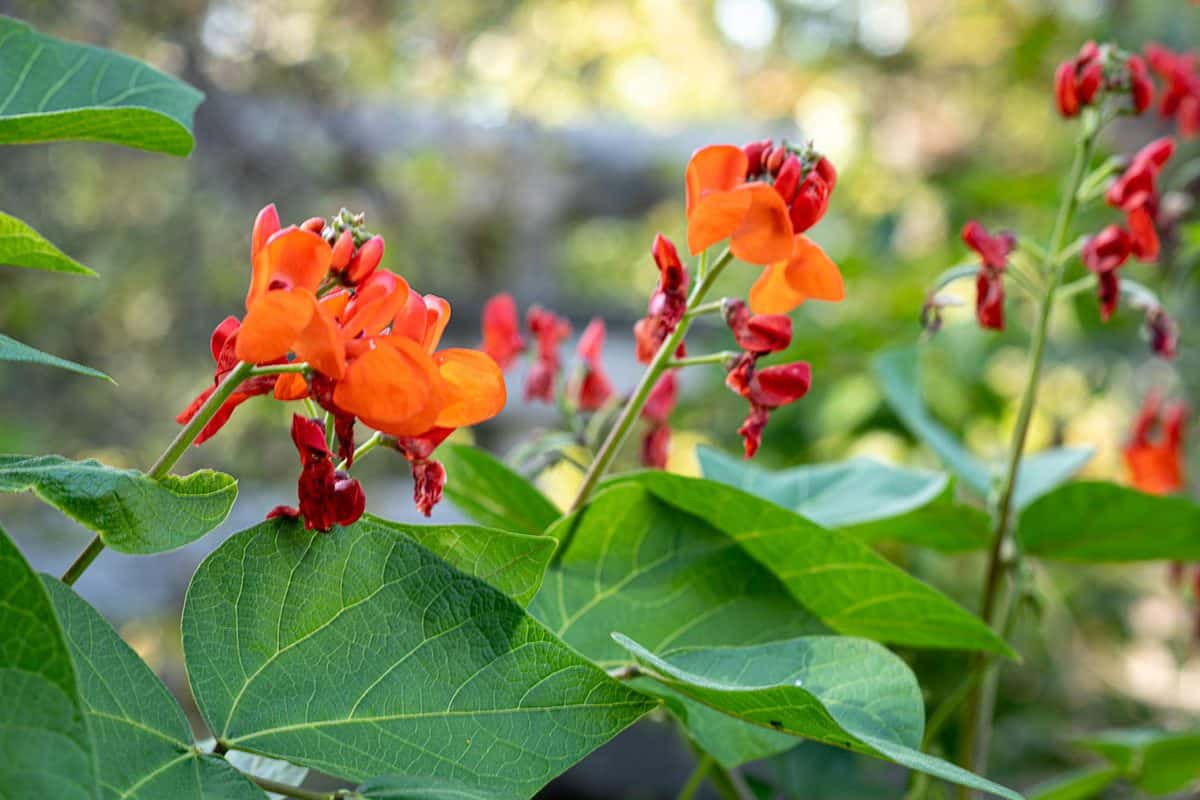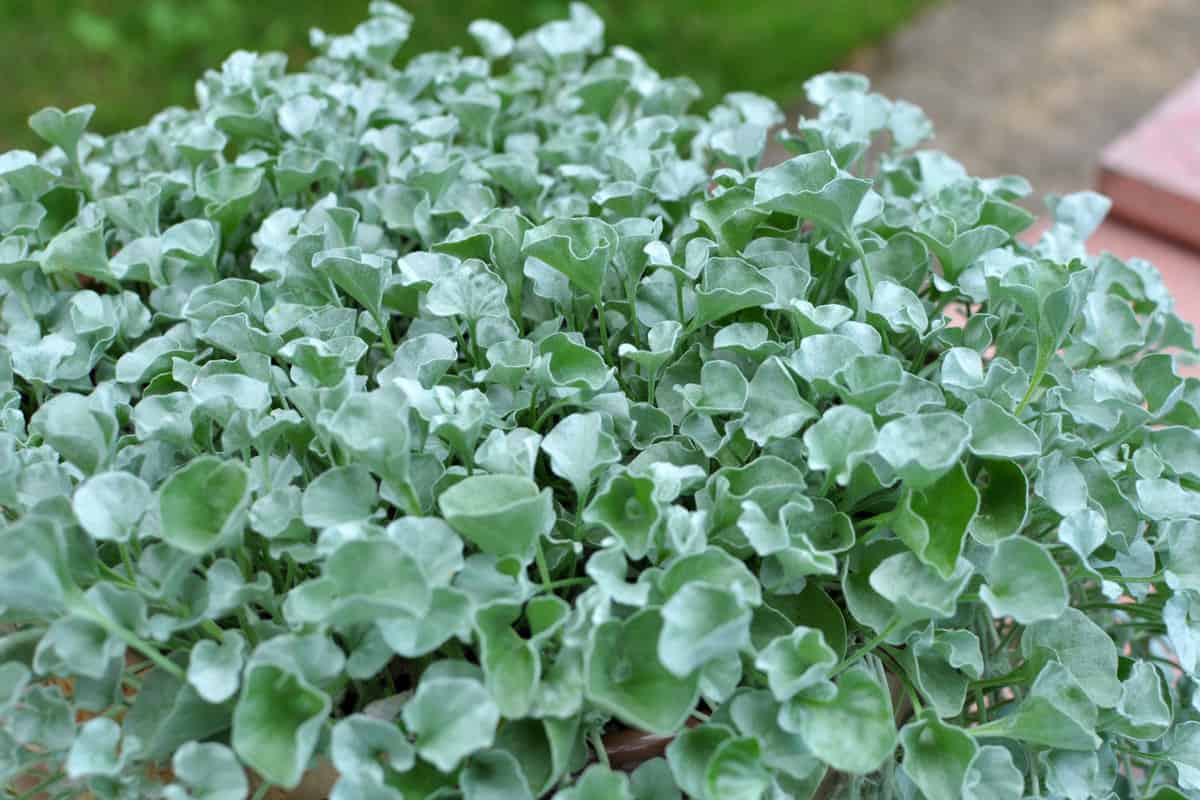The vertical wall garden can be a beautiful focal point for your yard or garden.
But what do you do if you have a wall or fence that you want to hide? Perhaps you love the look of a vertical garden overflowing with foliage.
What are the best cascading plants for a wall garden that will take your vertical space from ho-hum to fantastic?
As I am planning my own cascading garden to cover up an unsightly-looking fence, I have been doing a lot of research and am happy to share my results with you.
Various cascading plants will thrive in a wall garden, depending on whether you are looking for plants that bear fruits or veggies, flowering plants, or tumbling greenery.
The ideal plants will be lush and full as they cascade down their support creating a full-coverage effect. Below are some of my favorite options:
Fruits and Veggies:
- Strawberries
- Cherry tomatoes
- Cascading blackberries or raspberries
- Vining cucumbers
- Runner beans
Flowering plants:
- Wave petunias
- Creeping phlox
- Clematis
- Lobelia - cascade variety
- Vinca
- Cascading roses
- Creeping thyme
Tumbling Greenery
- Virginia creeper
- Dichondria “Silver Falls”
- Golden creeping jenny
- Heucherella
- Sweet potato vines
- English ivy
Each of these types of plants has its own individual growing conditions and care requirements to make the most of their beauty.
Keep reading to find out how to choose the right plants for your space!

Cascading Fruits and Veggies For A Wall Garden
If you want to make your wall garden do double duty as a beautiful centerpiece while still growing plants that will fill your dinner table, these are the plants for you!
Keep in mind that these plants all do their best when they have 6 to 8 hours or more of direct sunlight daily.
Strawberries

A favorite summer fruit, strawberries are shoo-ins for a wall garden that gets plenty of sunlight. They have shallow root systems that can grow almost anywhere. They will spread all down your wall as the plants send out runners as they grow.
The vertical structure of a wall garden is ideal for growing strawberries. It keeps the fruit off the ground as it ripens.
This will result in healthy fruit that can sun ripen without you having to worry about small rodents like rabbits or squirrels getting to your berries before you do.
Strawberries like well-drained, sandy soil and regular fertilization with a good organic fertilizer. You will need to water them for just a few days.
Cherry Tomatoes

Indeterminate cherry tomatoes are a vining type of plant that will grow multiple vines to cover your garden wall.
The vines must be trellised in some fashion to promote good airflow and keep the vines orderly.
The root system can be planted at the top of your garden and will need plenty of soil to keep it properly supported.
Provide a good fertilizer and water thoroughly every other day as needed to keep the soil moist.
Just a couple of these plants will keep you overloaded with cherry tomatoes all summer until the first hard frost.
Be prepared to share with friends and family, as using them all yourself will be next to impossible!
Cascading Blackberries or Raspberries
These were a new discovery for me, and I am super excited to try them out. Traditional blackberry and raspberry plants grow from tall thorny canes that will spread everywhere throughout your garden if not carefully pruned.

Cascading blackberries produce compact, arching plants with thornless trailing stems that produce a mass of berries.
Blackberries like hot, sunny locations and plenty of water. These plants are extremely easy to grow, so they are perfect for beginners.
Vining Cucumbers
Cucumber plants have a sprawling habit, making them ideal for a cascading garden.
You can train the vines to grow up your wall. They will need to be trained to provide support for the fruit.

Growing cucumbers on a trellis enhances airflow around the plant, which helps to avoid fungus and disease.
Cucumbers are heavy feeders, so you will need to prepare the soil by incorporating decomposed manure and compost before you plant.
Scarlet Runner Beans

Like cucumbers, scarlet runner beans grow on vines and are very prolific climbers. A wall covered in these plants will provide plenty of green beans for your family throughout the summer.
They bloom out in red flowers that are beautiful, and the young beans can be eaten whole. If you leave them to grow, you can harvest the red beans from the pods for a different type of bean dish.
Plant them at the base of your wall and provide a little support. They will cover your wall before you know it!
Flowering plants
Cascading plants that produce flowers are a great way to add color and excitement to your garden. You can use them to either create an entire wall of color or mix them with non-flowering plants to build a carefully crafted work of art.
Wave Petunias
These beautiful trumpet-shaped flowers are available in a variety of bright and cheery colors. They will produce an ocean of color from early summer through fall.

The wave variety of petunias will sweep down your garden wall enveloping it in a few short weeks.
All they need to thrive are water and periodic removal of the spent flowers or deadheading.
Petunias are annuals, so you will need to replant them each year. Wave petunias can be difficult to find sometimes, but they are completely worth the search.
Your best bet is to get bedding plants from a reputable nursery or garden center.
If you start with seeds, you should start them inside on a warm, sunny windowsill about 6 to 8 weeks before the last frost date. This will ensure you enjoy the entire season with your flowers.
Creeping Phlox
This spreading mass of spring flowers will cover up to 2 feet in diameter in a dense carpet of green and tiny red, blue, pink, purple, or striped flowers.

Creeping phlox is a favorite ground cover because of its dense growing habit. Butterflies are attracted to it, but deer are not, so it is a good choice if you live in an area where deer are an issue.
They are cold-hardy up to garden zone 9, so they are a great low-maintenance option that will come back year after year.
Clematis

Traditionally used as a climber, when clematis does not have something to climb up, they will grow out and down.
These vines produce large colorful flowers all summer long, and the plants will grow lush and full without much assistance whatsoever.
They are perennials. You can use them as a foundation planting for your wall garden. Plant them in a sunny spot, give them water once a week, and watch them cover your wall with color.
Lobelia - Cascade Variety
Lobelia is a sweet dainty flower that is available in white and true blue. They prefer full sun but will tolerate some partial shade. It is a tender perennial through zones 9 and 10 and annuals everywhere else.

Trailing varieties such as Light Blue Basket and Trailing Sapphire will spread over your garden walls and provide a layer of cool color to your landscape.
Your best option is to purchase plants at a local nursery or garden center, but you can also start them from seeds 6 to 8 weeks before you want to plant them outdoors.
In areas where they are perennial, you can direct-sow the seeds the fall before for a spring start.
Vinca

Vinca is a trailing vine that produces star-shaped lavender flowers. It can be invasive, as I have found out the hard way.
Make sure you plant it where you want it, and keep it pruned back, as it will take over your whole garden if you let it go long enough.
It is very hardy and almost impossible to kill, so if you are looking for a great low-maintenance plant, vinca may be a great choice for you.
 Cascading Roses
Cascading Roses
One of my favorites is the cascading rose. It is technically a climbing rose and will grow and bloom all summer long.
It will provide months of sweeping color. The red cascade is a perfect example of this type of rose.

Roses need full sun and plenty of water, as well as periodic deadheading to encourage new blooms.
Depending on the type you choose, they can bloom on either new or old growth, so you will need to keep that in mind when you are pruning them in the early spring while they are still dormant.
Creeping Thyme
Creeping thyme is a perennial herb that grows in a low creeping mat covered with tiny white, pink, or lavender flowers. Thyme will grow, creep down a rock wall, and cover it in a sweet fragrance.

It likes dry conditions and well-drained garden soil. Too much water can cause it to rot. Thyme prefers full sun, but there are a few types that can tolerate partial shade.
Tumbling Greenery
Plants that are lush and leafy are perfect for creating the base planting for your wall garden or transforming any area into a cool and inviting sanctuary.
Virginia Creeper

This massive perennial can cover up to 50 feet with a 5 to10 foot spread. It is lush and green through the summer months, but in the fall turns a bright crimson color.
It is definitely thick and great if you want to cover an ugly fence or wall.
This plant will grow anywhere and everywhere, so beware. It puts out suckers that will cling to anything, and the roots will grow all over.
Dichondria “Silver Falls”
This plant is a true cascading plant with beautiful silver foliage that will spill over the edges of your wall garden. It will spread 2 to 4 feet wide very quickly.

Silver falls is easy to grow in sunny, well-drained soil. It is an evergreen and hardy to 40 degrees. You will need to water it weekly and keep it weeded until it fills in.
Golden Creeping Jenny

This plant is easy to grow in full to partial shade and needs to be kept well-watered. It has round yellowish leaves that turn purple-red in the fall. It can grow up to 30 feet wide very quickly, so it is a good choice to cover a wall quickly.
Heucherella
This heat-tolerant plant is a fairly new genus made by crossing coral bells and foamflower to create a cascading plant with colored foliage and unusually cut leaves with dark centers. They are shade-loving ground-covering plants.

Heucherellas are tolerant of hotter temperatures and some sun but prefer afternoon shade. They are good for dry conditions but will have to be watered occasionally in the summer.
Sweet Potato Vines
Sweet potato vines are very versatile, easy-to-grow plants and can be found almost anywhere plants are sold.

It has chartreuse, copper, black, or purple leaves, depending on your chosen variety.
It grows best in moist, well-drained soil, in full sun to partial shade. They can grow quite large over the course of the season but can be pruned without fear of damaging the plant.
English Ivy
This vine is known for its dark green leaves and lush foliage that will grow thick and cover a wall in no time.

The deep color of English ivy makes a perfect foil for flowering plants, and it is almost impossible to kill, so it’s great for beginning gardeners.
Spray the plants with water weekly to keep spider mites at bay, and fertilize it monthly with 20-20-20 fertilizer for the best results.
Plan, Plant, and Relax!
Once you have reviewed the plant information above, you should be able to plant the perfect wall garden. This will add beauty and value to your garden.
Here's a pin you can use to save this post to Pinterest:


